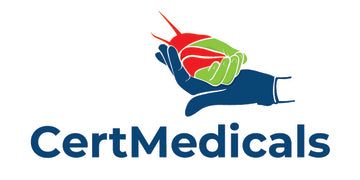SUBLOCADE® (buprenorphine extended-release) injection is a prescription medicine used to treat opioid addiction as part of a bigger treatment plan or to relieve moderate to severe pain. It is given to adults with opioid drugs addiction or for people who depend on opioid painkillers or heroin already receiving buprenorphine in the oral form placed under their tongue or inside the cheek.
Sublocade injections are for subcutaneous use. They can be given only in a certified healthcare setting and under a restricted distribution program known as Sublocade® REMS (Risk Evaluation and Mitigation Strategy) Program.
Sublocde injection is not given to people allergic to buprenorphine or those not given oral buprenorphine for at least seven consecutive days. Our staff ensures whether the patient has ever had the following issues:
- breathing problems,
- urinating problems or an enlarged prostate
- sleep apnea;
- a head injury
- mental disorder
- alcoholism,
- liver or kidney disease
- brain tumor
- spine curvature affecting breathing
- a heart rhythm disorder
- long QT syndrome
- deficiency of potassium or magnesium in your blood
- Addison's disease
- health issues related to gallbladder or thyroid glandTreating opioid addiction with once‑monthly SUBLOCADE
It is also not recommended for pregnant and breastfeeding patients and anyone under the age of 18. The continuous use of sublocade or any other opioid medications during pregnancy may threaten the baby. Breastfeeding patients may notice severe drowsiness or slow breathing in their baby.
Sublocade injections are given once a month by the healthcare professionals under the skin. It is never injected into a vein or muscle. In any case, one should not administer this medicine on their own.
Otherwise, it can damage the skin or tissues or form a solid mass if it comes into contact with blood. In the worst case, it can develop a blood clot, which can be fatal.
The patient may notice a small lump under their skin after each injection that lasts for several weeks. There should be at least 26 days gap between each Sublocade injection.
Sublocade injections are given as part of a complete treatment plan, counseling, and other addiction-related support.
Sublocade Injections Dosage
- Patients are first given a buprenorphine-containing product for induction in a certified healthcare setting for seven days.
- The recommended dose for Sublocade injections following the above mentioned induction is 300 mg for the first two months. It is followed by a 100 mg of dose on a monthly basis. If the patient tolerates 100 mg dose, the staff may increase their dose to 300 mg.
- If a patient misses a dose, the next dose is given as soon as possible. A 2 weeks delay has no significant impact.
- Patients may experience sedation or other buprenorphine-related effects due to the increase in plasma level after a 300 mg dose injection.
Our Staff is trained and follows instructions for the use of Sublocade Injections.
Sublocade injections are abdominal subcutaneous injections and must not be injected intravenously, intramuscularly, or intradermally. Only a healthcare provider can prepare and administer these injections.
Our staff has the necessary knowledge of handling and using the product and follows the essential recommendations, such as wearing gloves, removing injections from the refrigerator at least 15 minutes before the administration, discarding any product left at room temperature for as long as seven days.
To ensure that SUBLOCADE injections are only administered in a healthcare setting under the supervision of a health care provider, they are subject to REMS, a program including a restricted distribution system.
Clinical Supervision for Sublocade Injections
The treatment plan, including Sublocade injections, need periodic assessment to evaluate its effectiveness and the patient's overall progress. The healthcare professional examines the injections to check for any signs of infection. The staff re-evaluates the need to continue medication-assisted treatment periodically due to the opioid use disorder's chronic nature.
In addition, there is no recommended duration for the treatment. It may continue indefinitely for some patients. The staff considers the patient's clinical status when considering stopping the treatment.
To discontinue Sublocade injections, the staff considers its extended-release characteristics and monitors the patients for withdrawal signs and symptoms for several months to treat them appropriately. Once the patient achieves stability (in 4 to 6 months), their plasma level after discontinuing Sublocade may show detectable levels of buprenorphine for a year or longer.
Difference Between Sublocade and Suboxone
Patients often confuse Sublocade with Suboxone and ask about the difference between the two. Both contain buprenorphine that acts against opioid addiction. Buprenorphine works by minimizing the withdrawal symptoms and cravings. Below are the differences between the two:
- Sublocade contains only buprenorphine, while Suboxone has both buprenorphine and naloxone.
- Sublocade is an injection injected under the skin, whereas Suboxone is a film or pill put under the patient's tongue.
- Dose: Sublocade is given once a month; Suboxone is given once a day.
Another frequently asked question is whether Probuphine is better than Sublocade. Both are long-acting forms of buprenorphine, and there's no evidence indicating one is better than the other. The difference lies in their dosage and the procedure of administration. They are both used as a part of a treatment plan for opioid addiction.
Buprenorphine is an opioid drug, which in any form, by mouth, implanted or injected, decreases the cravings and withdrawal symptoms of addiction with the constant low dose.
It is important to note that since Sublocade injections are given as part of a bigger treatment plan, they are accompanied by counseling and psychological support therapies. In such a treatment, patients are not required to show up daily.
For more information on Sublocade injections or related questions, contact us at (321) 926-3649 or visit our website certmedicals.com
